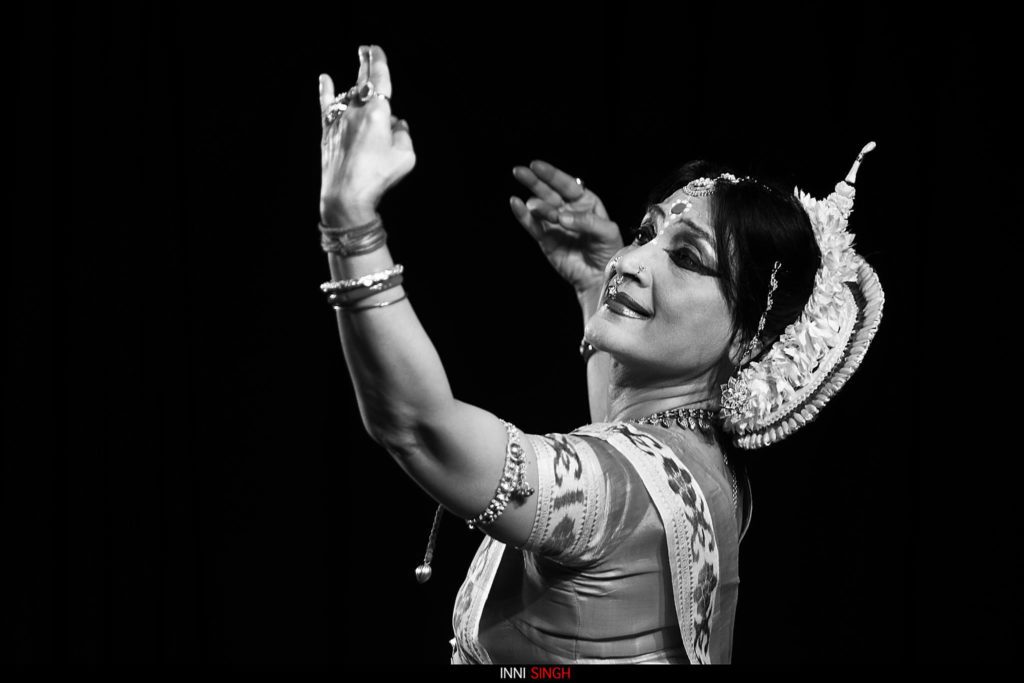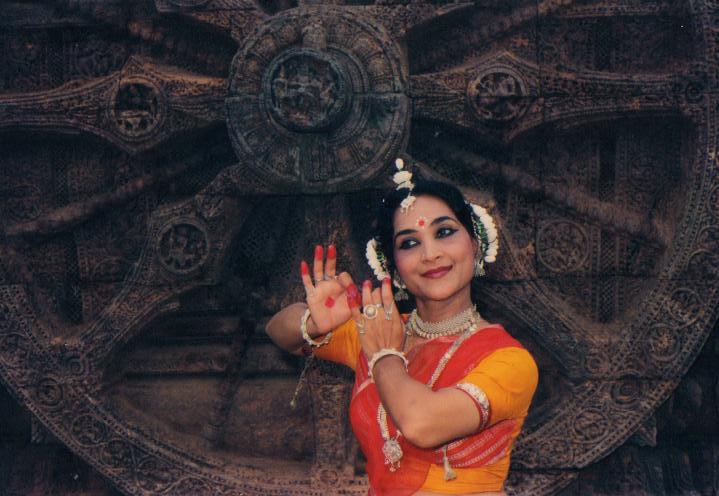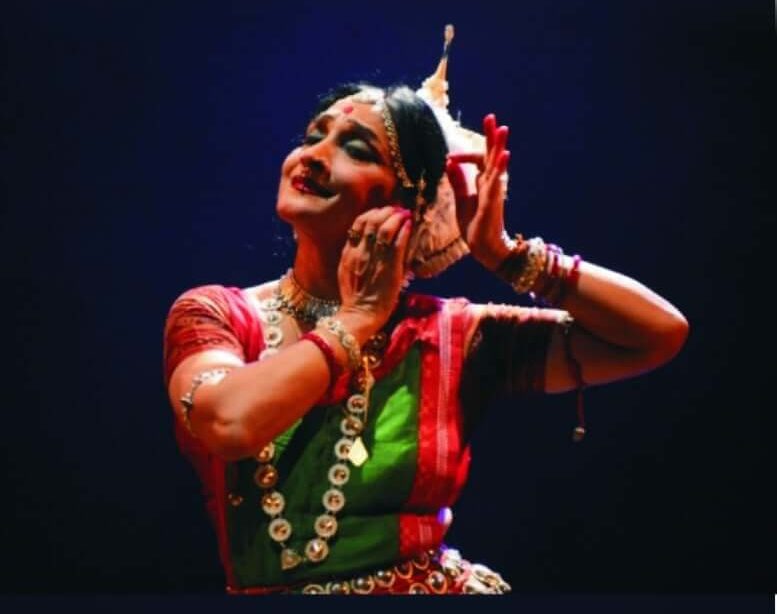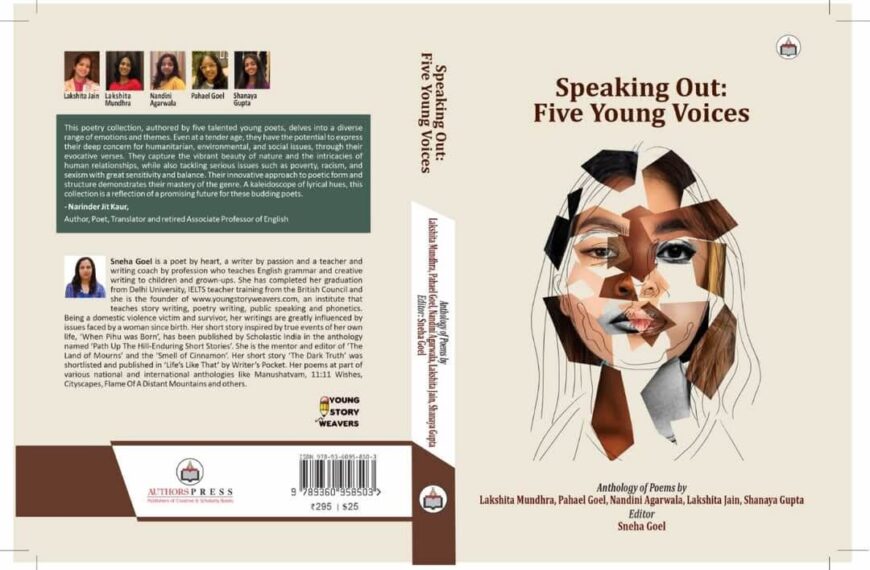Ruchira picked the brains of the famous Oddissi danseuse, Ranjana Gauhar, a Delhi-based artiste. Here’s an exclusive interview with Different Truths.

I have had several opportunities to watch her performances in the Capital’s cultural circles. With her amazing presence, utmost feminine beauty, and grace, coupled with flawless rhythmic movements, she strides on the stage like a colossus. She is Padmashree Ranjana Gauhar, a Delhi based doyen of the classical Odissi dance form.

Ruchira: Please tell us about your early years.

Ranjana: As far as I can remember since my childhood, I had a deep yearning for freedom, this irresistible urge to fly like a bird, dance on the branches of trees and connect with nature all around me. I heard the music in everything around me and sensed the rhythm through my body.
I am the youngest of my four siblings. Initially, my father, a businessman, encouraged us to dance. He admitted my elder sister and me into a dance school. But that did not last long, then along with a friend I joined another school and opted for Kathak since it was the only option available to us. I was very involved with Kathak but by this time I was already in my teens, gradually pressure began to mount, higher classes, board exams etc. So the focus shifted to academics rather than extra-curricular activities.

Ruchira: Who or what inspired you to classical dance?

Ranjana: When I was pursuing graduation at college, I happened to watch an Odissi dance recital for the first time. It was sheer beauty, aesthetic, lyrical and sculpturous qualities, the grace, beautiful movements, soulful music full of devotional flavor, the pristine quality, purity, and antique quality of the dance that attracted me to it.

Ruchira: Describe your journey into Odissi dance?

Ranjana: I was privileged to learn Odissi from the legendary guru Mayadhar Raut and sometimes from his senior disciple Aloka Panikkar. I have many interesting memories with my guruji. He was amazed to see my huge appetite to learn dancing. I could practice for hours and hours without growing tired. I never wasted time. I would practice after classes were over. In fact, I would dance for seven to nine hours daily learning and practicing. To sum up, I pursued this art form with great devotion, honesty and single mindedness. But since I was alone in my journey, it involved a lot of struggle. Once I advanced in my dance training, my parents felt there was no need to continue with dance. Somehow, I managed to persuade them that this was my life’s calling. Hence there was no question of giving up. I also decided that I would no longer depend on them to finance me. I took up various teaching jobs in schools and became self-reliant. I feel that this art has taught me to be independent right from day one.

Ruchira: Why did you choose Odissi of all dance forms?

Ranjana: The reason I feel drawn towards Odissi is because of the lyrical and sculpture-like qualities. Its movements are so graceful; there is a lyrical quality and a strong emotional flavor. The music is so mellifluous. Above all there is the Gita Govindam – the epitome of classical poetry matchless in quality. All these aspects do possess strong emotional characteristics which I find very attractive. Also, this dance form is based on Vaishnava philosophy. You see, I grew up in a family environment where lord Vishnu and Krishna were the predominant deity and greatly venerated. My mother was deeply devoted to Lord Krishna. In fact, she named our brother, Krishna. Personally, I felt I was in familiar surroundings. I felt the art had everything I was looking for. I loved the devotional quality, which I found missing in other dance forms. Odissi is very special to me, I feel it is the purpose of my life.

Ruchira: Some of your memorable performances.

Ranjana: In a career spanning about 40 years, I have had lots of interesting and memorable experiences. Thanks to Odissi dance, I have crisscrossed nearly three-fourth of the globe – have performed in South America, Africa, Southeast Asia, and more. But there is one which holds a special place in my heart. This was in Pakistan, in 1991. The then High Commissioner invited me to perform on August 15. It was a highly emotional moment because both my parents and family hailed from that part of Pakistan. I had never imagined I would be able to visit this place. The love and admiration, which the people showered on me on that occasion was indeed overwhelming. There were rave reviews on their leading dailies. Some even wondered why they did not have something similar, dignified and sophisticated temple dance in their country too.

On another occasion, I performed in Sri Lanka. The then High Commissioner suggested why not dance to their national anthem. They sent me their music. It was interestingly close to Hindi. So, my group and I danced to the composition. The locals were full of admiration and praise that someone had done that kind of composition. There is one more interesting anecdote which is worth mentioning. This was in Austria. The Indian Ambassador had organised a programme in a palace there again on 15th August. Many high-profile ambassadors and diplomats from diverse nations were present on the occasion. After the performance, the people were so enthralled that they followed me across the huge hall. Among them was an old lady, an Indologist, who kept close to me more than the others. She held my hand and kept articulating. But I failed to comprehend as she spoke no English. At long last, an interpreter was found, who disclosed that the old lady had never witnessed anything so beautiful. She perceived me to be ‘Radha’ from many past lives because incidentally I had performed a piece from Gita Govindam – where Radha is the Nayika. She kept in touch with me over telephone for many more years, even though communication was extremely difficult. I have never been able to forget the lady.

Ruchira: What are the awards and accolades that you won so far?

Ranjana: All awards, accolades, recognitions are of immense value. To me they are of utmost importance and significance to any artist and they mean a lot to me. I feel that the sheer fact that society and the people have faith in me and my art. I received the Padma Shri, in 2003, and the Sangeet Natak Academy award, in 2007. In addition, I am a recipient of several awards conferred by the Government of Orissa State Academy award, in 2007. Each award makes me feel so humble. It feels good that I have been able to achieve respect and admiration from the people.

Ruchira: Your favourite pastime.

Ranjana: My favourite pastime is nature walk. I love to go for walks, taking my pet dog along, to the Lodhi Garden. Its ambience is soothing and relaxing, breathing freely, looking at the trees and open skies, is such a beautiful experience. I love eating. I love to watch movies. However, I watch only very good movies till the end and avoid watching entire length of movies which often depict violence and unusual activities. They put me off. These days, I conduct online classes, it’s a new kind of experience and I am beginning to enjoy it.
I also plan new projects; different ideas are churned. We look for different types of music, poems…. This keeps me busy. We also organise festivals, which require a lot of coordination work. These are very time consuming. I follow a regimen of yoga and pranayam, which puts me in a positive frame of mind. So, the day passes and by the time you realise this, it’s gone!

Ruchira: Please tell us about your dance academy.

Ranjana: My academy was envisaged as an institution for teaching dance, in 1987. But as I grew, my understanding and my horizon broadened I realised that teaching was just one aspect and that we could do many more things. We began organising festivals. We conduct three festivals every year. One of them is Saare Jahan Se Achha, which is for the senior artists, gurus and their students to celebrate India’s Independence Day. Unbound Beats of India for established dancers and “Sutarang” for young upcoming, budding artists of the Odissi style. In addition, we hold seminars on music and dance, lecture demonstrations, and short performances. I have a repertoire of dancers, who are all my students. We have travelled across the world performing globally and in India as well. Our ultimate objective is to showcase the rich tradition of Indian dances and music worldwide and to spread awareness about its richness. We also invite artists from overseas, who mingle with local artists, audience and media, this fosters understanding and everyone learns to appreciate Indian Arts. The main focus though is Odissi dance, music is off and on but dance is regular. It has been so for over the last 33 years.

Ruchira: Your notable students?

Ranjana: To me all students are at par. I do not discriminate or distinguish between them. It is like asking a parent who is his/her favourite child. In my eyes all are equal. Nowadays, almost everybody has their presence on social media e.g. Instagram, which helps their assertion as to what they are really worthy of their culture etc. The ties between a guru and his/her disciples run deep. I love them all equally.


: What is dance to you?

Ranjana: Dance is not only a journey, a process of learning an art but also a journey of the artist. This experience of learning touches one’s soul, awakens consciousness and makes him/her a more vibrant, more alive, and more sensitive human being. It creates awakening, creates connection with the soul. I can say from my personal experience that the one thing that stood by me during my highs and lows, my rise and fall to my personal life in dance. It stood by me when everyone looked the other way. I could always turn to my dance to find peace, solace and happiness. It has always uplifted my spirit.
As you perform you communicate through your dances, revealing your inner being which creates vibrations in the hearts of your viewers. They begin to experience the same emotion, which you are depicting. They begin to connect with the art and the artist. This effective communication is the greatest strength of this art.

Ruchira: What is the future of Odissi dance?

Ranjana: In my view the future of any art form depends on how many students come forward to learn because the present or the older generation has done its lot and will continue to do so. But the younger generation are the people who can take the heritage forward. They are the last connect between the present generation and the future. So the important thing is how many youngsters are interested and how many youngsters we can promote. Today, it is very important to promote your students. They must get a platform, and opportunity to showcase what their work is worth or else they will get disheartened. They also need money and respect. I still find the acceptance missing – more and more acceptance by society and the government is essential. More and more opportunities ought to be created. Today, the students pursuing classical arts and dance (especially the urban lot) are highly qualified people who are planning parallel professions; often they consequently are lacking the sense of total surrender. I had made a decision I will do nothing else but dance. But these people are unable to do that due to various types of pressure and demands. Can’t blame them because the opportunities available aren’t so many. Not that we had many. It’s still a tricky, dwindling situation. For any art to survive it’s very important that disciples/students must take it forward.

Ruchira: You have had an interesting career. Any regrets in life?

Ranjana: Dance is the hidden language of the soul. To dance is to reach far a world that does not exist. To sing the heart song of a thousand generations, to feel the meaning of a moment in time; I think there is no more beautiful activity than dance. I am so fortunate and blessed by lord Jagannath to have gone into a path that brought me close to the lord. Dance made me understand, appreciate Odia culture and history. It has enriched me, I feel satiated and at peace with myself. I do not think there is anything to regret in my life. I am filled with a deep sense of gratitude to the divine.
Photos sourced from the interviewee






 By
By
 By
By

 By
By